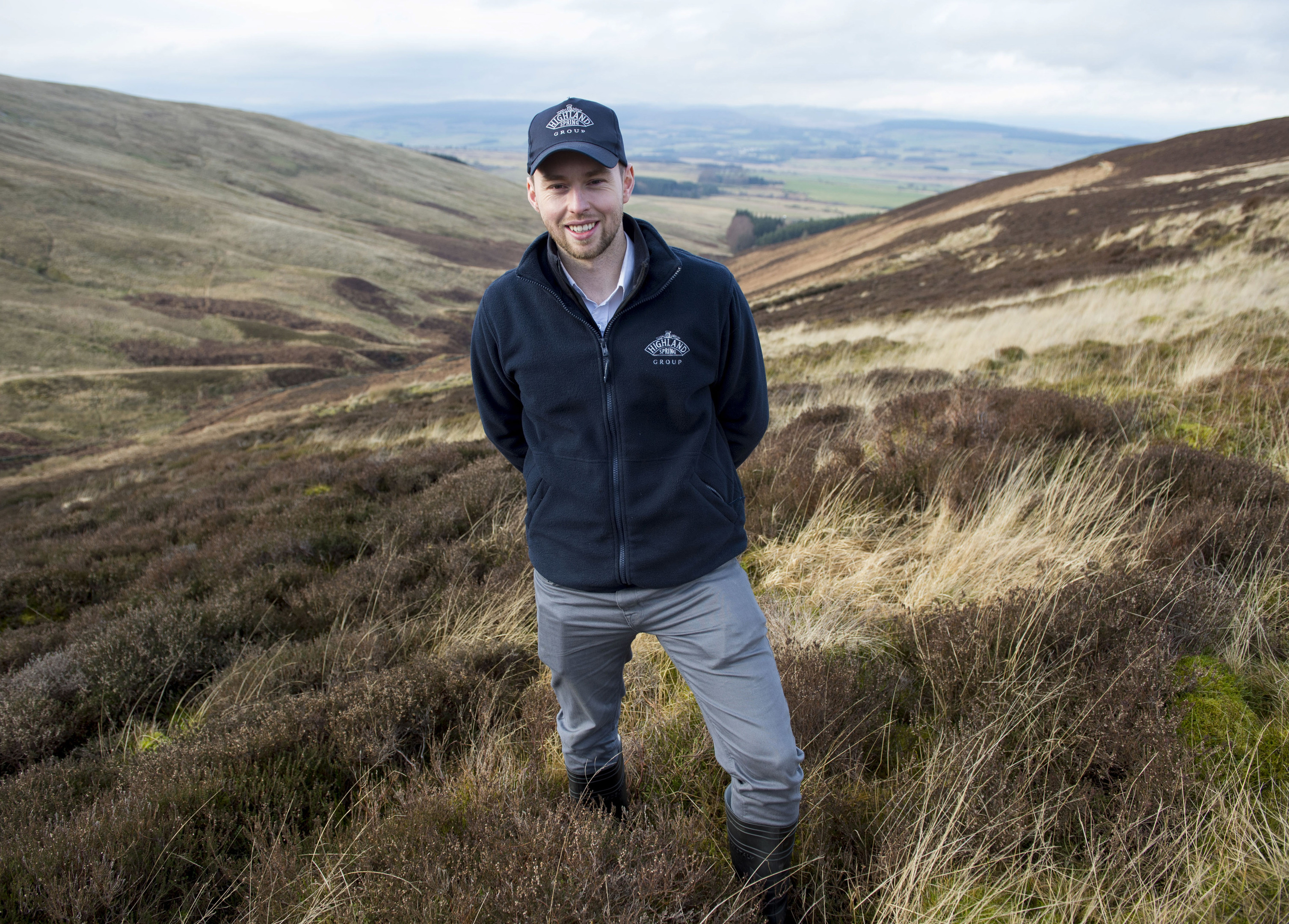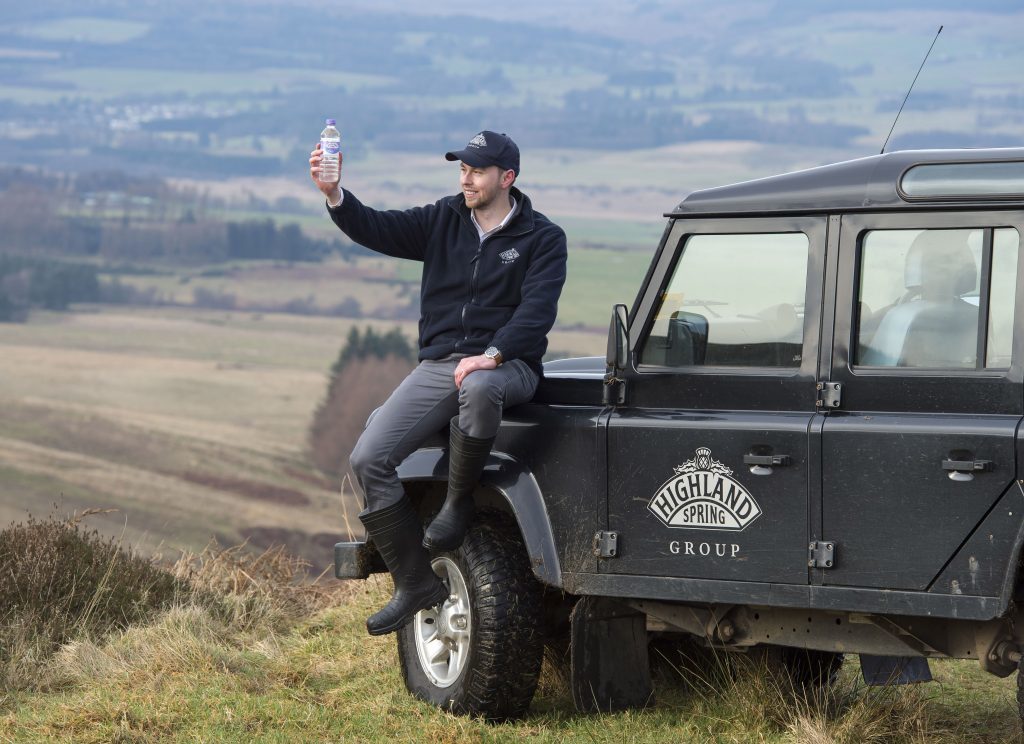We all know we need to drink plenty of water to stay properly hydrated but how often do we stop to wonder where that water might have come from?
For Blair O’Connor, water guardian for Highland Spring, the journey begins in the Ochil Hills, deep within rock formations formed 400 million years ago.
Highland Spring has been drawing water from this protected land for more than 35 years and although Blair is new to the job, his experience as a geologist, iron mining in Western Australia, has stood him in good stead.
Growing up in the Highlands, Blair, 29, spent much of his childhood outdoors exploring lochs, rolling hills and remote countryside. So to be tasked with looking after a natural resource and preserving magnificent landscape is a dream job for him.
“It’s an honour to have been passed the baton and chosen to protect such a historic source,” he smiles.
“I’m replacing Frank Findlay, who recently retired and looked after the land as if it was his child for over 30 years.”
Highland Spring is the UK’s leading producer of natural source plain bottled water and accounts for one in every five bottles of water in the country, producing 500 million litres of water a year.
Blair explains what sets it apart from other spring waters.
“In 2001, the Soil Association certified the land here at the source of Highland Spring water as organic,” he says. “Not only are there precious few of these accreditations in the UK, but we’re one of the only major bottled water brands that draws water from this unique type of land.”
“It’s not easy to bottle what nature gives us and bring it straight to you – we have to keep it pure and protected from anything and everything that doesn’t grow, hop or nibble at the wild heathers and grass that cover our land.”
Blair’s job is to manage the water resource, interpreting all water data from the rainfall, groundwater levels and abstraction of the water so it’s no surprise to learn that the reliable Scottish rain fills Rory and the team with delight. When it falls, it trickles into a huge natural filter – layer upon layer of basalt packed with millions of little cracks.
So begins the water’s long journey to becoming Highland Spring. The purifying basalt does wonderful things to the water, but without the layer of sandstone further down the hill it would all be for nothing. This impermeable rock ensures that only water that falls on the upper slopes enters the natural filter.
It takes 15 years trickling its way through the basalt for water to be pure enough to be deemed Highland Spring and the minute quantities of minerals make the water taste unique.
Blair has discovered that there’s no such thing as a typical day. He might be dealing with numbers and figures at his desk, or on the hillside checking boreholes, and it’s these different environments from the hillside to the factory that he enjoys the most.
Working with a natural resource means that the elements can throw in a few extra challenges along the way.
“We monitor and maintain readings up at the bore holes daily and provide the environmental agency with water samples. The weather can sometimes make this rather challenging; if it snows we struggle to get around the hills, making it difficult to measure the water levels,” Blair explains.
“It’s crucial we do this because if something goes wrong in the hillside, it could have a knock-on effect on production at the factory.
“Whatever we do, we act sustainably, hand-in-hand with nature to minimise our impact on our special surroundings.”
www.highlandspring.com


![IR20170206Blair45[1][1][1]](https://wpcluster.dctdigital.com/thecourier/wp-content/uploads/sites/12/2017/04/IR20170206Blair45111-1024x700.jpg)









